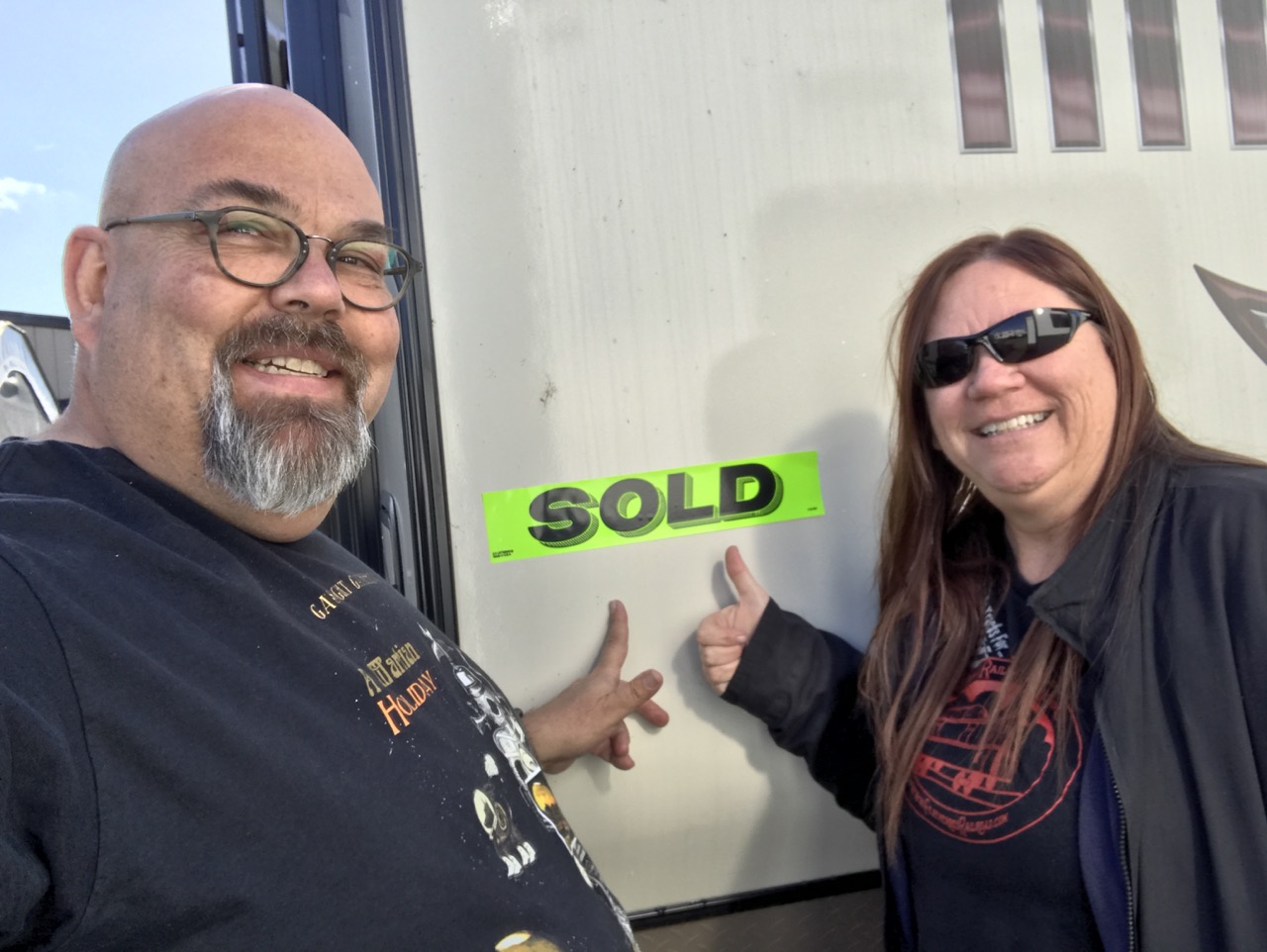Visiting the SPAM Museum in Austin Minnesota
What’s in the SPAM museum in Austin, Minnesota and is it worth visiting? Is there actually SPAM in the SPAM museum and what is in SPAM anyway? We paid a visit to the museum today to answer these questions.
What is the SPAM Museum?
Located in Austin, Minnesota the SPAM Museum is a 14,000 square foot very modern museum dedicated to the iconic canned meat, SPAM. The museum represents the history of the product as well as the history of Hormel, the company that came up with SPAM.
It also highlights the significance of SPAM both historically as well as culturally. Did you know there are places where SPAM remains highly popular?
We happened to be rolling through town and saw a billboard for the SPAM museum and, being lovers of all things Americana, we had to go.
What is in the SPAM Museum?
As you enter the door it’s clear that this is a very modern museum meaning that there are a ton of interactive displays. Near the entrance is a hub of activity with games and displays you can touch and operate, all of which help tell the story of SPAM.
While you’re playing on ground level some 380 cans of SPAM are on a conveyor belt system overhead. According to a sign, there are 20 varieties of SPAM on that overhead system and it takes them about 18 minutes to make the full tour of both the museum and the gift shop. Yep, there’s a gift shop - more on that in a moment.
A large conveyor belt with over 300 cans of SPAM encircles the SPAM Museum on an endless journey
From the entrance I then stepped into another room which has a display you can sit at which is sort of a game to see how quickly you can make SPAM. The SPAM in this game is actually a plush and your goal is to make six cans of SPAM with the challenge being a clock. You stuff the SPAM in the can, put a lid on it, stick it in a fake oven, push a button so the SPAM “cooks,” get it out of the oven and put a label on it and put it into a container. Bam.
I didn’t do so well but I did enjoy the display, but I would have enjoyed it more had I discovered the lab coat and hard hat while I was making my cans of SPAM.
The legacy of SPAM
Next up you travel back to WWII where more interactive displays show you how SPAM was used then. There’s an interesting poster on the wall with, “Only those who have eaten SPAM at dawn toasted on the end of a knitting needle at a bomb [shelter], amongst debris, can really know [how good it is]” which is credited to Dorothy Block, in letter to the editor of Ladies Home Journal, May 1945.
The display where I”m canning, cooking and labeling cans of SPAM
Apparently SPAM was shipped to US troops wherever they fought in 50 pound crates and there is one there on a pulley that you can lift. Nifty.
SPAM travels
Another space has displays to represent Japan, Korea, China and the United Kingdom and how SPAM is a part of those cultures. Oh, I didn’t forget Hawaii but it gets it’s own coverage as the canned meat product is very, very popular on the islands with them consuming some eight million cans a year! Further, Hawaii now even has a SPAM festival.
Oh yeah, they put it on rice dishes, in buns, on pizza with pineapple. SPAM is everywhere in Hawaii so it gets its own display and now I want something with SPAM and pineapple. I could be Hawaiian - I really like SPAM and I’ve worn grass skirts to many a Jimmy Buffett concert.
What is SPAM
Spam was introduced by the Hormel Foods Corporation. Jay C. Hormel, the son of the company's founder, developed Spam as a way to use surplus pork shoulder, which was a less popular cut of meat. SPAM is cooked in its own can and is shelf-stable meaning it doesn’t have to be refrigerated.
The name “SPAM” was suggested by Kenneth Daigneau, who won a $100 prize for coining the term. The exact meaning of "SPAM" is still debated, with theories ranging from “spiced ham” to a contraction of “shoulder of pork and ham.” Heck, $100 in the 1930s was real money.
Even in the museum the true meaning is debated; however, in all cases it’s written as SPAM indicating that it is an acronym.
SPAM cans throughout history
Surprisingly it consists of six ingredients, pork, salt, potato starch (which is there to help it stay moist), sugar (and they’re very clear that it’s actually sugar, not corn syrup) and sodium nitrate.
More SPAM stuff
Some of the fun other displays include one that’s a tribute to the Monty Python sketch from the restaurant that only serves dishes with SPAM in them. There’s a table with two cups and saucers there that looks like the one in the TV bit.
When I was in high school, being the annoying teenager that I was, I loved the repetitive and annoying song in this skit and would sing it to the dismay of others.
That skit ultimately inspired a broadway show called SPAMalot which was actually rather good and there’s a tribute to that, too.
Our local theater company did a run of SPAMalot (or is it Spamalot?) and I ran the sound for the production. Good times.
Should you go to the SPAM Museum?
While the museum is well done I don’t know if it’s worth making a special trip to go see it. However if you’re within a couple of hundred miles of the place, certainly make the trip. Which is how we found ourselves in the SPAM Museum.
I also didn’t think you could sample SPAM there but I was wrong as a team member suddenly popped-up with samples of two kinds of SPAM; Tocino and Maple. Wait, she wasn’t a team member, she was a SPAMbassador. Apparently the Tocino is from the Philippines and the Maple is a newer flavor from the company that’s making it’s way around the US.
I liked it enough to buy a can of the Maple kind and have plans to eat some with a waffle and egg.
Where to have SPAM for lunch or dinner
While the museum itself doesn’t serve SPAM meals, I supposed you could buy a can of SPAM in the gift shop and bust it open.
SPAM PoBoy at Piggy Blue's BBQ in Austin, Minnesota
Which reminds me of the display of how the cans themselves have looked over the years. If you go back far enough, do you remember the key that came with SPAM where you opened the can in the middle with the key in a nice, sharp ribbon of metal? Of course that key or the ribbon of metal broke before you could open the darned can so it was never convenient? Anyhow, they have one of these on display in a case with other historical examples of the container.
Another way to have your SPAM and visit it too is to go to the nearby Piggy Blues restaurant. We were told they had SPAM on the menu but we didn’t see it until we asked. That’s when the special SPAM menu comes out with only four items on it; a SPAMburger, SPAM fries, 3 Piggies and SPAMtown Po’ Boy.
The SPAM fries are beer-battered sticks of SPAM and the 3 Piggies is grilled SPAM, bacon and pork.
I chose the Po’ Boy and it was gooooooood. It was thick slices of SPAM with fries, tomatoes, lettuce and your typical Po’ Boy sauce on a French loaf. That loaf was crunch and good - someone knows how to make bread. I really liked it and shared a bit with Peggy and still didn’t have room for dinner.
Peggy got the SPAMburger but she didn’t get the bun so, well, it was a piece of SPAM with cheese and that’s why I shared my sandwich. Don’t not get the bun.




























